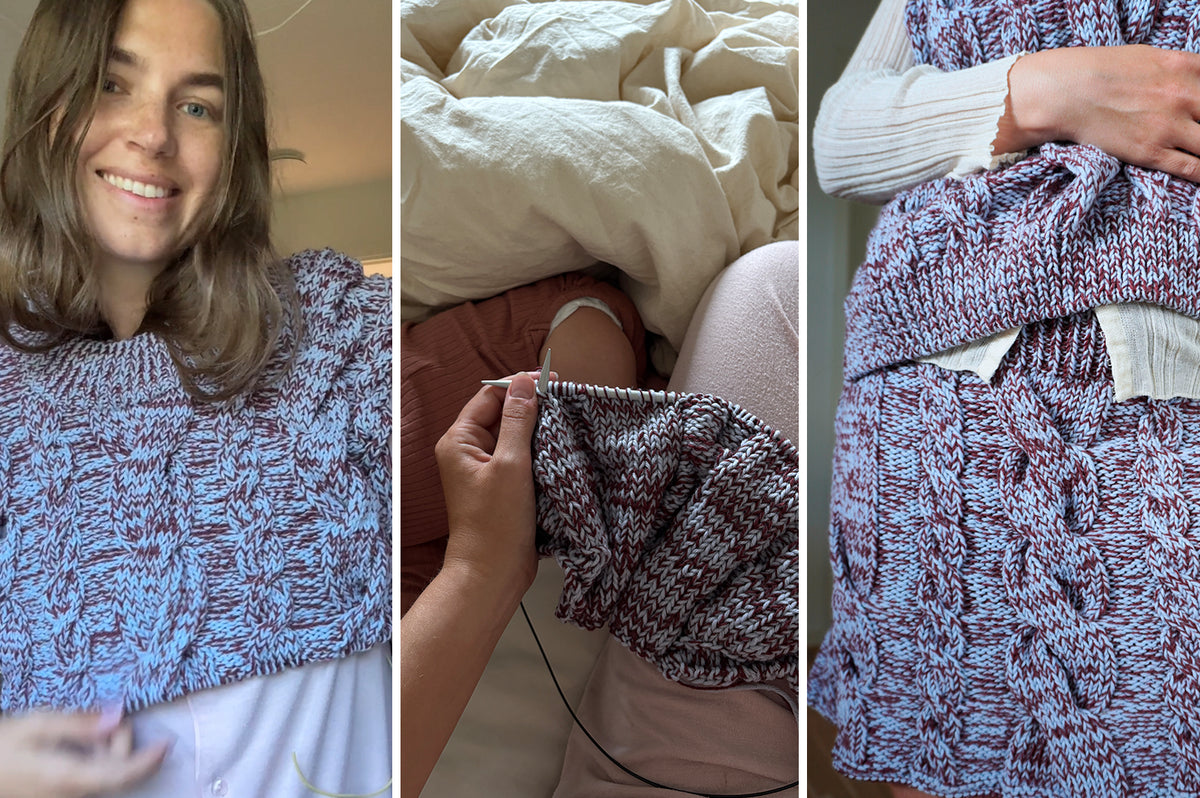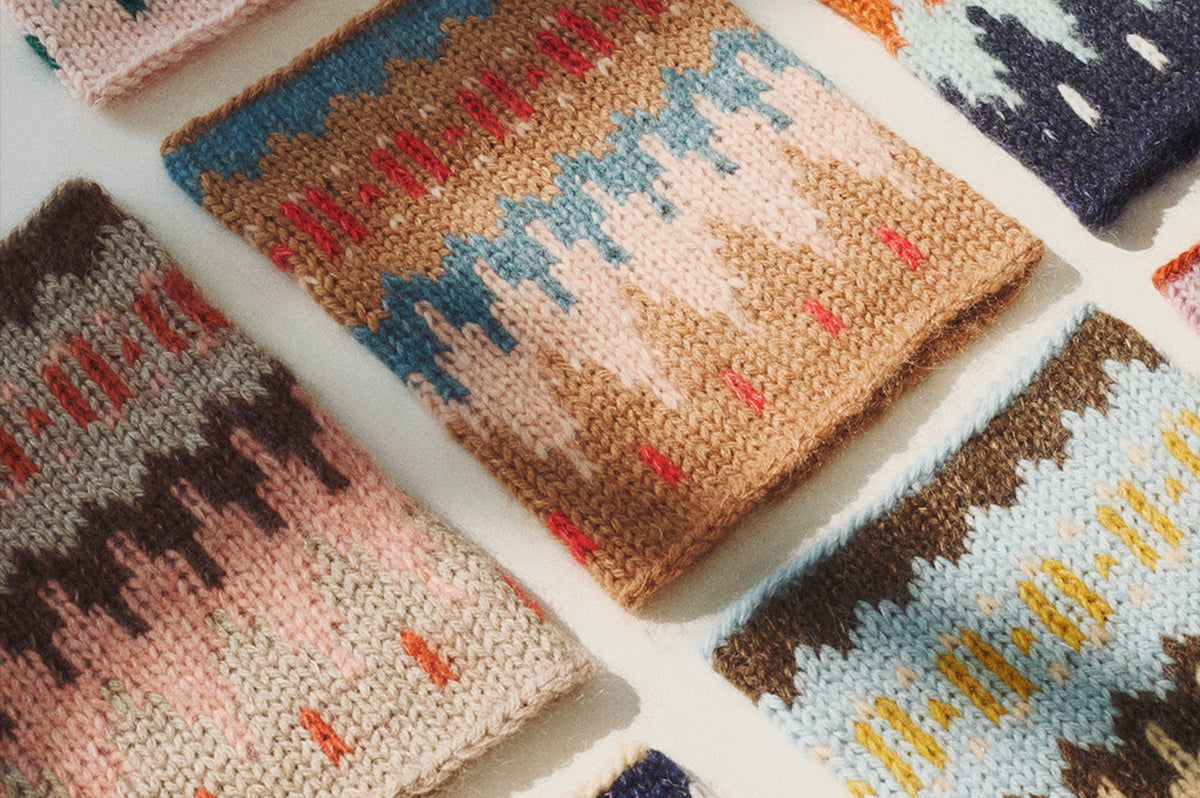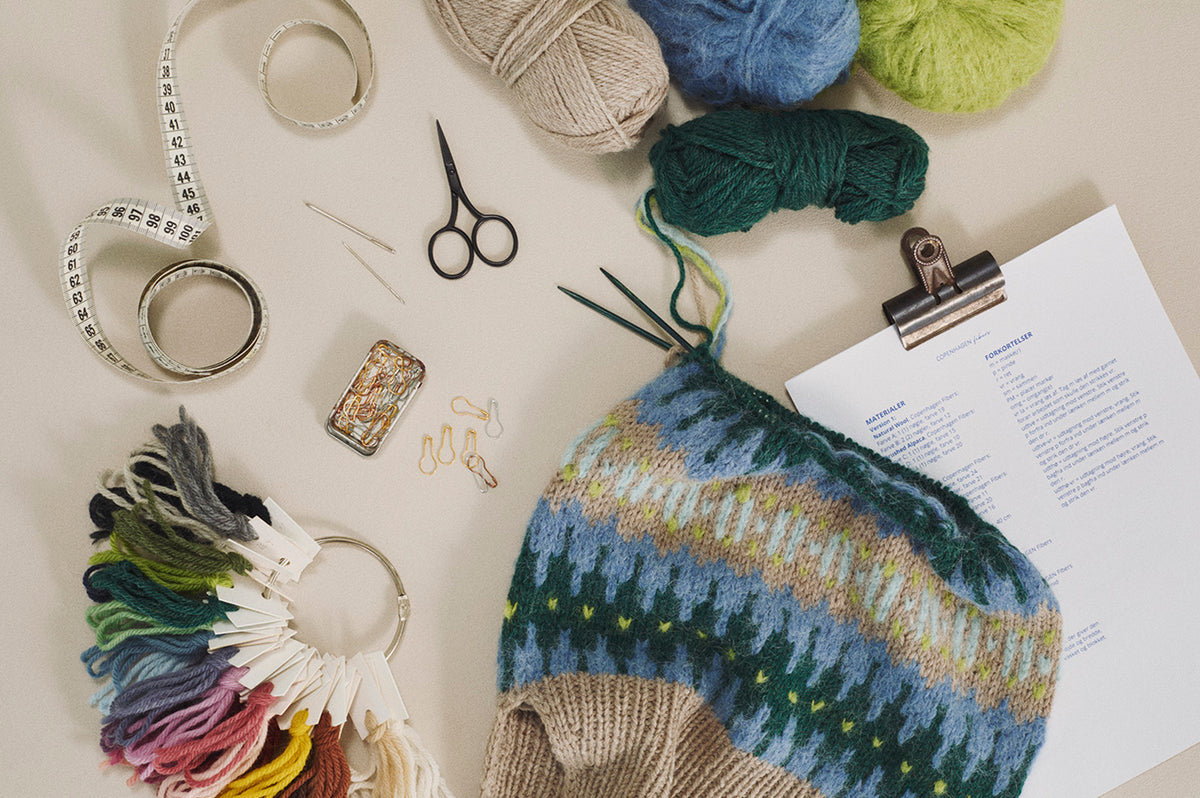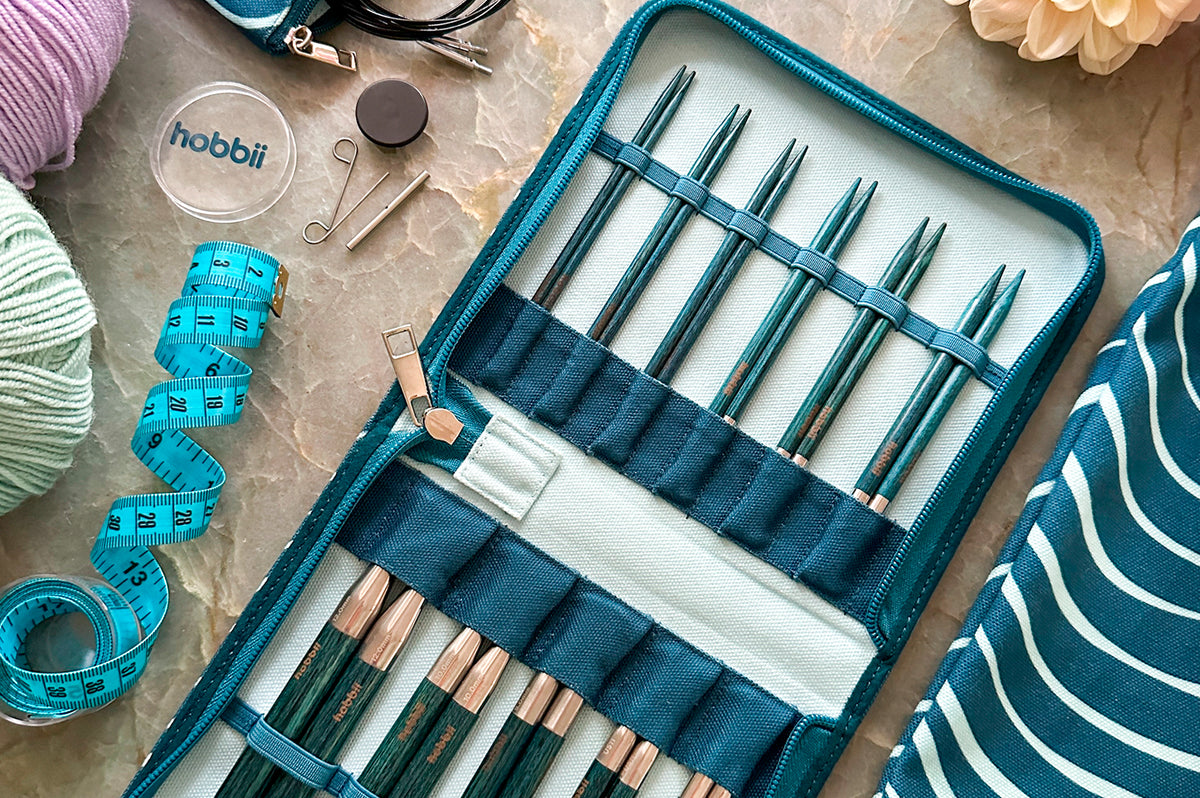Hitting a knot in a new skein is a total bummer that can stop your crafting flow right in its tracks! But before you get frustrated, we're here to help. Finding a knot is super common, and the good news is, there's a good fix for every situation.
The best way to handle a knot really depends on your yarn. What works for a grippy wool isn't always best for a slippery cotton.
So, we'll tell you exactly why they happen, the one big thing you should never do, and then walk you through all the best joins. We've got super-easy fixes for total beginners and a few "next-level" tricks for more experienced crafters who want a truly invisible finish.
Let's get this sorted and get you right back to happy crafting! ❤️
Skip directly to your preferred method: The Easiest Way, The Magic Knot, The Spit Splice, The Russian Join, or The Staggered Splice.
Why Are There Knots in My Yarn?
First off, let’s get this out of the way: a knot is not a sign of "bad" yarn. It’s actually a normal part of how yarn is made.
Yarn is spun on huge spools—think thousands of yards at a time. When one of these spools runs out, it has to be joined to the next one to keep the process going. And sometimes, a single strand of yarn breaks while it's being spun, dyed, or wound into a skein.
To avoid wasting tons of perfectly good fiber (which would make yarn way more expensive!), the ends are joined together. The best and most common way to do that? You guessed it: a knot.
How many knots are "normal"?
That’s the big question! While there isn't a single industry-wide rule, finding two or three knots in a 50-gram (1.8 oz) skein is generally considered normal.
If you just find one, it's a normal part of the process. If you find more than four or five, you might have just had a bit of bad luck with that particular skein.
What Not to Do with Knots in Yarn
Okay, you’ve found a knot. It’s tempting to just shrug, slide the knot to the back, and keep right on knitting or crocheting over it.
But please don't just work the knot into your project!
Here’s why: those knots are often tied just to hold the ends together for winding. They are not designed to be permanent.
That little knot will likely wiggle itself loose in the wash. And what happens when it comes undone? You're left with a dreaded hole in your finished project, and a hole is so much harder to fix than a knot ever was. 😱
How to Fix a Knot in Your Yarn: 3 Easy and Beginner-Friendly Ways
The best way to "fix" a knot is to get rid of it completely. Yep, the first thing you should do is grab your scissors and snip that knot right out.
Now you'll have two separate ends of yarn. And, don't worry, this is a good thing!
Here are three easy, beginner-friendly ways to join those ends and get back to crafting.
Method 1: The Easiest & Safest Fix (Our Go-To!)
This is, hands down, the easiest, most-used, and 100% foolproof method. We recommend this one for all beginners!
The secret? Just pretend you're starting a new ball of yarn.
Best for: Absolutely everything! This is the most reliable method for all yarn types, from slippery silks and bamboos to textured, "bumpy" yarns. It's the way to get a truly invisible finish on garments.
It's simple! Just follow these steps:
1. Cut out the knot, leaving two separate ends.
2. Drop the "old" end (the one you were just working with). Leave a tail about 15 cm (6 inches) long hanging at the back of your work.
3. Pick up the "new" end (the other side of the cut). Also, leave a 15 cm (6-inch) tail and just start knitting or crocheting with it.
4. That's it! Just keep going.
Later, when you're all finished with your project, you'll have two extra ends to weave in, just like you would at the beginning or end of a skein. It’s the cleanest, most secure way to get a perfectly smooth finish with any type of yarn.
Method 2: The Magic Knot (Great for Cotton!)
This method is super popular because it creates a tiny, very strong knot that (usually) won't come undone. It's a favorite for amigurumi (stuffed toys) since the tiny knot just vanishes inside the project.
Best for: Yarns with a good "grip", like 100% cotton, non-superwash wool, and most acrylics.
Use with caution: We don't recommend this for slippery yarns (like silk, bamboo, or very shiny, "slick" acrylics) because the ends can sometimes slide out.
Ready? Here’s what you do:
1. Lay your two ends (from your cut-out knot) next to each other, pointing in opposite directions.
2. Take the first end (let's call it A) and tie a simple, loose knot around the second end (B).

3. Take end B and tie a simple, loose knot around end A.
4. Now, pull the two main strands of yarn (not the little tails!). The two knots will slide together and lock.

5. Pull it TIGHT!
6. Snip the little tails off as close to the knot as you dare.

Method 3: The Spit Splice (A Little Magic for Wool)
This one sounds a little silly, but we promise, it's a game-changer if you're using the right yarn.
This method literally felts the two ends of your yarn together, so there's no knot at all.
Best for: 100% animal fibers that are not superwash treated. Think 100% wool, alpaca, etc. It must be a fiber that can felt. This will not work on cotton, acrylic, or superwash wools.
Here’s how you do it:
1. Fray the last inch or two of both yarn ends with your fingers.
2. Overlap the frayed ends in the palm of your hand.

3. Get your palm just a little bit damp. (Yes, "spit" is the traditional way, but a tiny drop of water works just fine.)
4. Rub your palms together... hard!
5. Keep rubbing until you feel the fibers grab onto each other. The heat, moisture, and friction will felt the ends into one continuous piece of yarn.

Two More Joins for the Experienced Crafter
Feeling confident with the basics? Once you've got the hang of things, you might want a couple more "fancy" joins in your toolkit. These are a little more fiddly, but they are amazing for creating totally seamless transitions.
Method 4: The Russian Join (Perfect for Plied Yarns)
With this method, you use a needle to weave the yarn ends back into themselves, creating a secure, knot-free join that is practically invisible.
Best for: Most plied yarns (yarns made of multiple strands twisted together). It works great on wool, acrylics, and cotton blends. It's not suitable for single-ply (roving) yarns.
You’ll need a tapestry or darning needle (a sharp tip helps!)
Here's the breakdown:
1. Thread End A onto your tapestry needle.

2. Carefully weave the needle back through the center of End A's own plies for about 5-8 cm (2-3 inches). Don't pull the yarn all the way through—leave a small loop at the end.

3. Thread End B onto your needle.
4. Pass End B through the loop you left in End A.

5. Just like you did before, weave the needle back through the center of End B's plies.
6. Gently pull on both main yarn strands. The loops will tighten, and the join will smooth out. It might feel slightly thicker in that spot, but it's a secure lock.

Method 5: The Staggered Splice (For Bulky Yarns)
Ever tried to knot a bulky or chunky yarn? The knot can end up looking and feeling like a small rock! The Staggered Splice (also called a "Ply Split") is the perfect solution. The goal is to thin out the ends so they overlap smoothly.
Best for: Bulky, chunky, and any multi-ply yarn (especially those with 4+ plies) where a regular knot would create a huge, lumpy bump.
Here's what you do:
1. Let's pretend your yarn has 4 plies. On End A, carefully separate the plies for the last 15 cm (6 inches) or so. Snip two of those plies, leaving the other two long.
2. Do the same on End B: separate the plies and snip two of them.
3. Now you have two "thinned out" ends. Overlap them, gently twisting them together in your fingers. Your yarn is now back to its original 4-ply thickness, just with new strands!
4. Simply knit or crochet right through this overlapped section. The join is staggered, super strong, and you won't feel any bump.
You've Got This!
See? That knot is no big deal.
Next time you find one, you’ll grab your scissors and know exactly what to do.
















